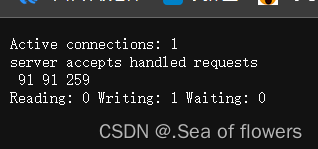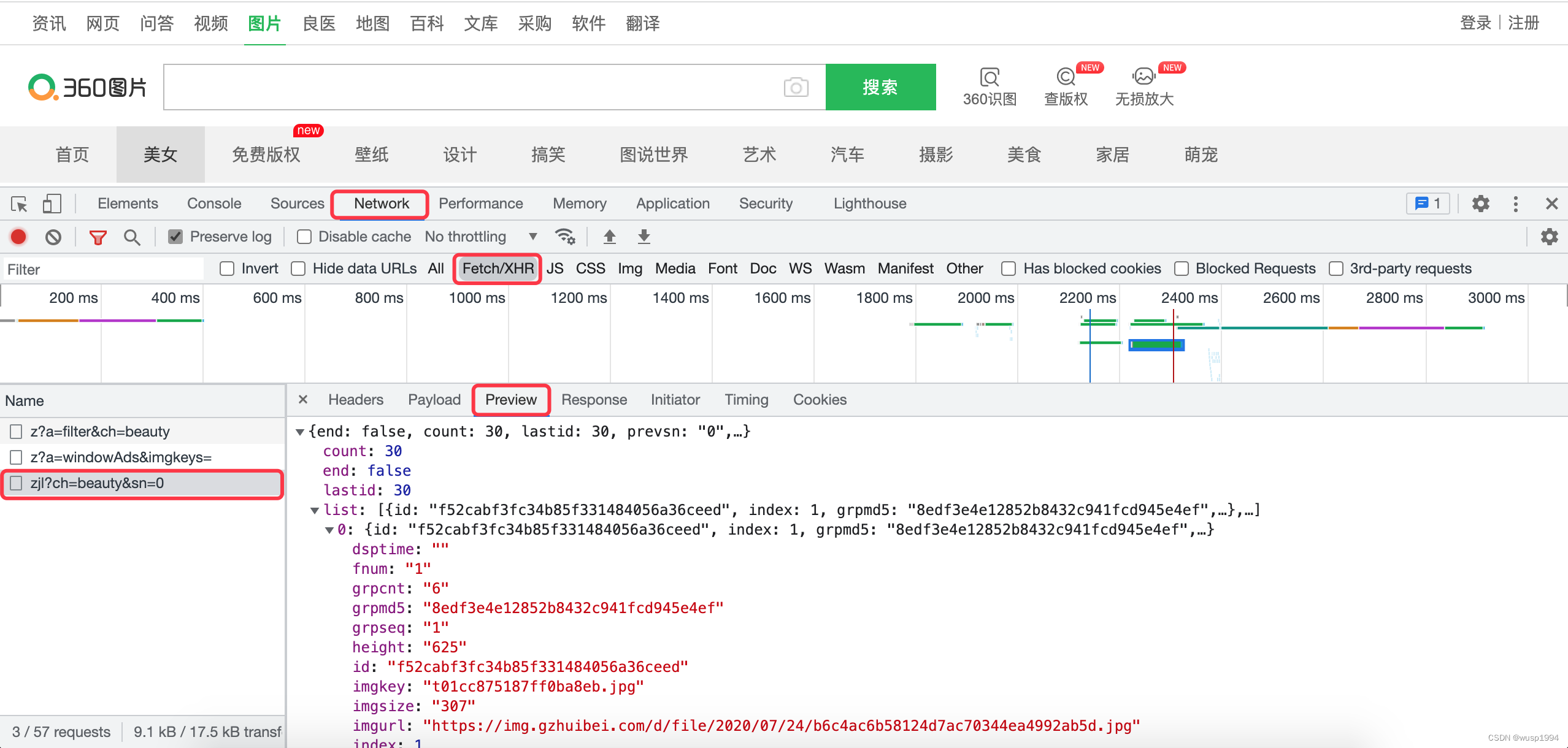HTTP介绍
在应用层 : HTTP,FTP,ssh,SMTP,POP3
网络层: TCP,UDP
TCP:可靠的,
UDP:不可靠的,直播,视频 qq 微信
HTTP协议是Hyper Text Transfer Protocol(超文本传输协议)的缩写,是用于从万维网(WWW:World Wide Web )服务器传输超文本到本地浏览器的传送协议。
HTTP是一个基于TCP/IP通信协议来传递数据(HTML 文件, 图片文件, 查询结果等)
1、HTTP 工作原理
HTTP协议工作于客户端-服务端架构上。浏览器作为HTTP客户端通过URL向HTTP服务端即WEB服务器发送所有请求。
Web服务器有:Nginx,Apache服务器,IIS服务器(Internet Information Services)等。
Web服务器根据接收到的请求后,向客户端发送响应信息。
HTTP默认端口号为80,但是你也可以改为8080或者其他端口。
HTTP三点注意事项:
HTTP是无连接:无连接的含义是限制每次连接只处理一个请求。服务器处理完客户的请求,并收到客户的应答后,即断开连接。采用这种方式可以节省传输时间。
HTTP是媒体独立的:这意味着,只要客户端和服务器知道如何处理的数据内容,任何类型的数据都可以通过HTTP发送。客户端以及服务器指定使用适合的MIME-type内容类型。
HTTP是无状态:HTTP协议是无状态协议。无状态是指协议对于事务处理没有记忆能力。缺少状态意味着如果后续处理需要前面的信息,则它必须重传,这样可能导致每次连接传送的数据量增大。另一方面,在服务器不需要先前信息时它的应答就较快。·

下面实例是典型的使用GET来传递数据的实例:
客户端请求:
Connected to www.testpm.cn (47.244.247.240) port 80 (#0)
> GET /hello.txt HTTP/1.1 # 请求方式与版本协议。
> User-Agent: curl/7.29.0 #用什么客户端访问
> Host: www.testpm.cn #主机名,域名。主机和端口号,
> Accept: */* #匹配什么文件类型,“*” 是通用匹配。匹配所有类型
服务端响应:
< HTTP/1.1 200 OK #请求返回的状态码
< Server: nginx/1.16.0 #请求的服务和版本号
< Date: Thu, 04 Jul 2019 08:19:40 GMT
< Content-Type: text/plain #文本类型,有html,plain:普通文本
< Content-Length: 12
< Last-Modified: Thu, 04 Jul 2019 08:13:25 GMT
< Connection: keep-alive #是否支持长连接
< ETag: "5d1db525-c" #标识,每次访问如果与最开始的一样返回304否则校验不一致返回200
< Accept-Ranges: bytes
HTTP 请求方法
重点方法:
GET:单纯获取数据(获取一个index.html页面)
POST:上传/创建文件(会产生新的数据)
PUT:保存数据(覆盖/更新文件、图片等,不会产生新的数据)
DELETE:删除

HTTP的响应头部信息


HTTP 状态码

下面是常见的HTTP状态码:
200 - 请求成功
301 - 资源(网页等)被永久转移到其它URL
302 - 资源(网页等)被临时转移到其它URL
403 - 服务器理解请求客户端的请求,但是拒绝执行此请求
404 - 请求的资源(网页等)不存在
500 - 内部服务器错误
http状态码列表



nginx的介绍
Nginx是一款轻量级的Web 服务器/反向代理服务器及电子邮件(IMAP/POP3)代理服务器,并在一个BSD-like 协议下发行。其特点是占有内存少,并发能力强,事实上nginx的并发能力确实在同类型的网页服务器中表现较好,中国大陆使用nginx网站用户有:百度、京东、新浪、网易、腾讯、淘宝等。
为什么选择nginx
作为 Web 服务器:相比 Apache,Nginx 使用更少的资源,支持更多的并发连接,体现更高的效率,这点使 Nginx 尤其受到虚拟主机提供商的欢迎。能够支持高达 50,000 个并发连接数的响应,感谢 Nginx 为我们选择了 epoll and kqueue 作为开发模型.
作为负载均衡服务器:Nginx 既可以在内部直接支持 Rails 和 PHP,也可以支持作为 HTTP代理服务器 对外进行服务。Nginx 用 C 编写, 不论是系统资源开销还是 CPU 使用效率都比 Perlbal 要好的多。
作为邮件代理服务器: Nginx 同时也是一个非常优秀的邮件代理服务器(最早开发这个产品的目的之一也是作为邮件代理服务器),Last.fm 描述了成功并且美妙的使用经验。
Nginx 安装非常的简单,配置文件 非常简洁(还能够支持perl语法),Bugs非常少的服务器: Nginx 启动特别容易,并且几乎可以做到7*24不间断运行,即使运行数个月也不需要重新启动。你还能够在 不间断服务的情况下进行软件版本的升级。
IO多路复用
I/O multiplexing【多并发】
第一种方法就是最传统的多进程并发模型 (每进来一个新的I/O流会分配一个新的进程管理。)

第二种方法就是I/O多路复用 (单个线程,通过记录跟踪每个I/O流(sock)的状态,来同时管理多个I/O流 。)
I/O multiplexing 这里面的 multiplexing 指的其实是在单个线程通过记录跟踪每一个Sock(I/O流)的状态来同时管理多个I/O流。发明它的原因,是尽量多的提高服务器的吞吐能力。
在同一个线程里面, 通过拨开关的方式,来同时传输多个I/O流

一个请求到来了,nginx使用epoll接收请求的过程是怎样的?
epoll 可以说是I/O 多路复用最新的一个实现,epoll 修复了poll 和select绝大部分问题, 比如:
• epoll 现在是线程安全的。
• epoll 现在不仅告诉你sock组里面数据,还会告诉你具体哪个sock有数据,你不用自己去找了
异步,非阻塞
$ pstree |grep nginx
|-+= 81666 root nginx: master process nginx
| |--- 82500 nobody nginx: worker process
| \--- 82501 nobody nginx: worker process1个master进程,2个work进程
每进来一个request,会有一个worker进程去处理。但不是全程的处理,处理到什么程度呢?处理到可能发生阻塞的地方,比如向上游(后端)服务器转发request,并等待请求返回。那么,这个处理的worker不会这么一直等着,他会在发送完请求后,注册一个事件:“如果upstream返回了,告诉我一声,我再接着干”。于是他就休息去了。这就是异步。此时,如果再有request 进来,他就可以很快再按这种方式处理。这就是非阻塞和IO多路复用。而一旦上游服务器返回了,就会触发这个事件,worker才会来接手,这个request才会接着往下走。这就是异步回调。
下载nginx
yum安装下载nginx
访问nginx的官方网站:nginx news
Nginx版本类型
Mainline version: 主线版,即开发版
Stable version: 最新稳定版,生产环境上建议使用的版本
Legacy versions: 遗留的老版本的稳定

配置yum源的官网:nginx: Linux packages
# yum install yum-utils -y
cd /etc/yum.repos.d
vim nginx.repo
将下面的文件写入nginx.repo
[nginx-stable]
name=nginx stable repo
baseurl=http://nginx.org/packages/centos/$releasever/$basearch/
gpgcheck=1
enabled=1
gpgkey=https://nginx.org/keys/nginx_signing.key
[nginx-mainline]
name=nginx mainline repo
baseurl=http://nginx.org/packages/mainline/centos/$releasever/$basearch/
gpgcheck=1
enabled=0
gpgkey=https://nginx.org/keys/nginx_signing.key
#清理缓存
yum clean all
yum makecache fast
yum repolist下载nginx
yum install nginx -y#nginx -v #-小v是查看nginx的版本
nginx version: nginx/1.16.0
#nginx -V #格式化打印
nginx version: nginx/1.16.0
built by gcc 4.8.5 20150623 (Red Hat 4.8.5-36) (GCC)
built with OpenSSL 1.0.2k-fips 26 Jan 2017
TLS SNI support enabled
configure arguments: --prefix=/etc/nginx --sbin-path=/usr/sbin/nginx --modules-path=/usr/lib64/nginx/modules --conf-path=/etc/nginx/nginx.conf --error-log-path=/var/log/nginx/error.log --http-log-path=/var/log/nginx/access.log --pid-path=/var/run/nginx.pid --lock-path=/var/run/nginx.lock --http-client-body-temp-path=/var/cache/nginx/client_temp --http-proxy-temp-path=/var/cache/nginx/proxy_temp --http-fastcgi-temp-path=/var/cache/nginx/fastcgi_temp --http-uwsgi-temp-path=/var/cache/nginx/uwsgi_temp --http-scgi-temp-path=/var/cache/nginx/scgi_temp --user=nginx --group=nginx --with-compat --with-file-aio --with-threads --with-http_addition_module --with-http_auth_request_module --with-http_dav_module --with-http_flv_module --with-http_gunzip_module --with-http_gzip_static_module --with-http_mp4_module --with-http_random_index_module --with-http_realip_module --with-http_secure_link_module --with-http_slice_module --with-http_ssl_module --with-http_stub_status_module --with-http_sub_module --with-http_v2_module --with-mail --with-mail_ssl_module --with-stream --with-stream_realip_module --with-stream_ssl_module --with-stream_ssl_preread_module --with-cc-opt='-O2 -g -pipe -Wall -Wp,-D_FORTIFY_SOURCE=2 -fexceptions -fstack-protector-strong --param=ssp-buffer-size=4 -grecord-gcc-switches -m64 -mtune=generic -fPIC' --with-ld-opt='-Wl,-z,relro -Wl,-z,now -pie'关闭防火墙与selinux
[root@nginx-server ~]# getenforce
Enforcing
[root@nginx-server ~]# sed -i '/SELINUX/s/enforcing/disabled/' /etc/selinux/config
[root@nginx-server ~]# systemctl stop firewalld
[root@nginx-server ~]# systemctl disable firewalld
启动并设置开机自启动
[root@nginx-server ~]# systemctl start nginx
[root@nginx-server ~]# systemctl enable nginx 打开浏览器,输入ip访问

源码安装nginx及使用
#### 1、安装编译环境
yum -y install gcc gcc-c++
#### 2、安装pcre软件包(使nginx支持http rewrite模块)
yum install -y pcre pcre-devel
#### 3、安装openssl-devel(使nginx支持ssl)
yum install -y openssl openssl-devel
#### 4、安装zlib
yum install -y zlib zlib-devel创建用户
useradd nginx
安装nginx
# wget http://nginx.org/download/nginx-1.16.0.tar.gz
#tar xzf nginx-1.16.0.tar.gz -C /usr/local/
#cd /usr/local/nginx-1.16.0/ 进入这个文件才能编译
# ./configure --prefix=/usr/local/nginx --group=nginx --user=nginx --sbin-path=/usr/local/nginx/sbin/nginx --conf-path=/etc/nginx/nginx.conf --error-log-path=/var/log/nginx/error.log --http-log-path=/var/log/nginx/access.log --http-client-body-temp-path=/tmp/nginx/client_body --http-proxy-temp-path=/tmp/nginx/proxy --http-fastcgi-temp-path=/tmp/nginx/fastcgi --pid-path=/var/run/nginx.pid --lock-path=/var/lock/nginx --with-http_stub_status_module --with-http_ssl_module --with-http_gzip_static_module --with-pcre --with-http_realip_module --with-stream
# make && make install
# mkdir /tmp/nginx启动nginx的服务
得在
/usr/local/nginx/sbin/nginx 直接运行该命令即可启动nginx服务通过nginx命令来控制nginx的服务
![]()
| nginx -c /path/nginx.conf | 以特定目录下的配置文件启动 |
| nginx -s reload | # 修改配置后重新加载生效 |
| nginx -s reopen | # 重新打开日志文件 |
| nginx -s stop | # 快速停止nginx |
| nginx -s quit | # 完整有序的停止nginx |
| nginx -t | # 测试当前配置文件是否正确 |
| nginx -t -c /path/to/nginx.conf | # 测试特定的nginx配置文件是否正确 |
nginx -s reload 命令加载修改后的配置文件,命令下达后发生如下事件
1. Nginx的master进程检查配置文件的正确性,若是错误则返回错误信息,nginx继续采用原配置文件进行工作(因为worker未受到影响)
2. Nginx启动新的worker进程,采用新的配置文件
3. Nginx将新的请求分配新的worker进程
4. Nginx等待以前的worker进程的全部请求已经都返回后,关闭相关worker进程
5. 重复上面过程,直到全部旧的worker进程都被关闭掉
实现nginx开机自启(通过脚本实现)
[root@localhost ~]# vim /etc/init.d/nginx
#!/bin/sh
#
# nginx - this script starts and stops the nginx daemon
#
# chkconfig: - 85 15
# description: Nginx is an HTTP(S) server, HTTP(S) reverse \
# proxy and IMAP/POP3 proxy server
# processname: nginx
# config: /etc/nginx/nginx.conf
# config: /etc/sysconfig/nginx
# pidfile: /var/run/nginx.pid
# Source function library.
. /etc/rc.d/init.d/functions
# Source networking configuration.
. /etc/sysconfig/network
# Check that networking is up.
[ "$NETWORKING" = "no" ] && exit 0
nginx="/usr/local/nginx/sbin/nginx"
prog=$(basename $nginx)
NGINX_CONF_FILE="/etc/nginx/nginx.conf"
[ -f /etc/sysconfig/nginx ] && . /etc/sysconfig/nginx
lockfile=/var/lock/nginx
make_dirs() {
# make required directories
user=`nginx -V 2>&1 | grep "configure arguments:" | sed 's/[^*]*--user=\([^ ]*\).*/\1/g' -`
options=`$nginx -V 2>&1 | grep 'configure arguments:'`
for opt in $options; do
if [ `echo $opt | grep '.*-temp-path'` ]; then
value=`echo $opt | cut -d "=" -f 2`
if [ ! -d "$value" ]; then
# echo "creating" $value
mkdir -p $value && chown -R $user $value
fi
fi
done
}
start() {
[ -x $nginx ] || exit 5
[ -f $NGINX_CONF_FILE ] || exit 6
make_dirs
echo -n $"Starting $prog: "
daemon $nginx -c $NGINX_CONF_FILE
retval=$?
echo
[ $retval -eq 0 ] && touch $lockfile
return $retval
}
stop() {
echo -n $"Stopping $prog: "
killproc $prog -QUIT
retval=$?
echo
[ $retval -eq 0 ] && rm -f $lockfile
return $retval
}
restart() {
configtest || return $?
stop
sleep 1
start
}
reload() {
configtest || return $?
echo -n $"Reloading $prog: "
killproc $nginx -HUP
RETVAL=$?
echo
}
force_reload() {
restart
}
configtest() {
$nginx -t -c $NGINX_CONF_FILE
}
rh_status() {
status $prog
}
rh_status_q() {
rh_status >/dev/null 2>&1
}
case "$1" in
start)
rh_status_q && exit 0
$1
;;
stop)
rh_status_q || exit 0
$1
;;
restart|configtest)
$1
;;
reload)
rh_status_q || exit 7
$1
;;
force-reload)
force_reload
;;
status)
rh_status
;;
condrestart|try-restart)
rh_status_q || exit 0
;;
*)
echo $"Usage: $0 {start|stop|status|restart|condrestart|try-restart|reload|force-reload|configtest}"
exit 2
esac添加权限:
chmod +x /etc/init.d/nginx重新加载系统启动文件
systemctl daemon-reload启动并设置开机自启
systemctl start nginx
[root@localhost ~]# /sbin/chkconfig nginx on ---开机启动Nginx的编译参数
# 查看 nginx 安装的模块
[root@localhost ~]#/usr/local/nginx/sbin/nginx -V
# 模块参数具体功能
--with-cc-opt='-g -O2 -fPIE -fstack-protector //设置额外的参数将被添加到CFLAGS变量。(FreeBSD或者ubuntu使用)
--param=ssp-buffer-size=4 -Wformat -Werror=format-security -D_FORTIFY_SOURCE=2'
--with-ld-opt='-Wl,-Bsymbolic-functions -fPIE -pie -Wl,-z,relro -Wl,-z,now'
--prefix=/usr/local/nginx //指向安装目录
--conf-path=/etc/nginx/nginx.conf //指定配置文件
--http-log-path=/var/log/nginx/access.log //指定访问日志
--error-log-path=/var/log/nginx/error.log //指定错误日志
--lock-path=/var/lock/nginx.lock //指定lock文件
--pid-path=/run/nginx.pid //指定pid文件
--http-client-body-temp-path=/var/lib/nginx/body //设定http客户端请求临时文件路径
--http-fastcgi-temp-path=/var/lib/nginx/fastcgi //设定http fastcgi临时文件路径
--http-proxy-temp-path=/var/lib/nginx/proxy //设定http代理临时文件路径
--http-scgi-temp-path=/var/lib/nginx/scgi //设定http scgi临时文件路径
--http-uwsgi-temp-path=/var/lib/nginx/uwsgi //设定http uwsgi临时文件路径
--with-debug //启用debug日志
--with-pcre-jit //编译PCRE包含“just-in-time compilation”
--with-ipv6 //启用ipv6支持
--with-http_ssl_module //启用ssl支持
--with-http_stub_status_module //获取nginx自上次启动以来的状态
--with-http_realip_module //允许从请求标头更改客户端的IP地址值,默认为关
--with-http_auth_request_module //实现基于一个子请求的结果的客户端授权。如果该子请求返回的2xx响应代码,所述接入是允许的。如果它返回401或403中,访问被拒绝与相应的错误代码。由子请求返回的任何其他响应代码被认为是一个错误。
--with-http_addition_module //作为一个输出过滤器,支持不完全缓冲,分部分响应请求
--with-http_dav_module //增加PUT,DELETE,MKCOL:创建集合,COPY和MOVE方法 默认关闭,需编译开启
--with-http_geoip_module //使用预编译的MaxMind数据库解析客户端IP地址,得到变量值
--with-http_gunzip_module //它为不支持“gzip”编码方法的客户端解压具有“Content-Encoding: gzip”头的响应。
--with-http_gzip_static_module //在线实时压缩输出数据流
--with-http_image_filter_module //传输JPEG/GIF/PNG 图片的一个过滤器)(默认为不启用。gd库要用到)
--with-http_spdy_module //SPDY可以缩短网页的加载时间
--with-http_sub_module //允许用一些其他文本替换nginx响应中的一些文本
--with-http_xslt_module //过滤转换XML请求
--with-mail //启用POP3/IMAP4/SMTP代理模块支持
--with-mail_ssl_module //启用ngx_mail_ssl_module支持启用外部模块支持修改配置文件/etc/nginx/nginx.conf
# 全局参数设置
worker_processes 4; #设置nginx启动进程的数量,一般设置成与逻辑cpu数量相同
error_log logs/error.log; #指定错误日志
worker_rlimit_nofile 102400; #设置一个nginx进程能打开的最大文件数
pid /var/run/nginx.pid;
events {
worker_connections 1024; #设置一个进程的最大并发连接数
}
# http 服务相关设置
http {
include mime.types;
default_type application/octet-stream;
log_format main 'remote_addr - remote_user [time_local] "request" '
'status body_bytes_sent "$http_referer" '
'"http_user_agent" "http_x_forwarded_for"';
access_log /var/log/nginx/access.log main; #设置访问日志的位置和格式
sendfile on; #是否调用sendfile函数输出文件,一般设置为on,若nginx是用来进行磁盘IO负载应用时,可以设置为off,降低系统负载
gzip on; #是否开启gzip压缩,将注释去掉开启
keepalive_timeout 65; #设置长连接的超时时间
# 虚拟服务器的相关设置
server {
listen 80; #设置监听的端口
server_name localhost; #设置绑定的主机名、域名或ip地址
charset koi8-r; # 设置编码字符
location / {
root /var/www/nginx; #设置服务器默认网站的根目录位置,需要手动创建
index index.html index.htm; #设置默认打开的文档
}
error_page 500 502 503 504 /50x.html; #设置错误信息返回页面
location = /50x.html {
root html; #这里的绝对位置是/usr/local/nginx/html
}
}
}nginx.conf的组成:nginx.conf一共由三部分组成,分别为:全局块、events块、http块。在http块中又包含http全局块、多个server块。每个server块中又包含server全局块以及多个location块。在统一配置块中嵌套的配置快,各个之间不存在次序关系。
nginx日志文件详解
nginx 日志文件分为 **log_format** 和 **access_log** 两部分
log_format 定义记录的格式,其语法格式为
log_format 样式名称 样式详情
配置文件中默认有
vim /etc/nginx/nginx.conf
将这四行都打开
log_format main '$remote_addr - $remote_user [$time_local] "$request" '
'$status $body_bytes_sent "$http_referer" '
'"$http_user_agent" "$http_x_forwarded_for"';
access_log logs/access.log main;
之后/usr/local/nginx/sbin/nginx -t
/usr/local/nginx/sbin/nginx -s reload
会提醒你没有logs目录,你需要在/usr/local/nginx 下创建一个logs目录即可
mkdir /usr/local/nginx/logs
nginx高级应用:
使用alias实现虚拟目录:
location /test {
alias /var/www/qianfeng/;
index index.html;
}
location /test {
root /var/www/qianfeng/;
index index.html;
}root只能访问 location下的根
alias 只能访问 location下的别名
其他访问都是403 404
通过 stub_status 模块监控 nginx 的工作状态
首先得下载
yum -y install httpd-tools
编辑 /etc/nginx/nginx.conf 配置文件
#添加以下内容~~
location /nginx-status {
stub_status on;
access_log /var/log/nginx/nginxstatus.log; #设置日志文件的位置
auth_basic "nginx-status"; #指定认证机制(与location后面的内容相同即可)
auth_basic_user_file /etc/nginx/htpasswd; #指定认证的密码文件
}
创建认证口令文件并添加用户qianfeng和zdgg,密码用md5加密
# yum install -y httpd-tools
#htpasswd 是开源 http 服务器 apache httpd 的一个命令工具,用于生成 http 基本认证的密码文件
htpasswd -c -m /etc/nginx/htpasswd 用户名 # -c 创建解密文件,-m MD5加密
后面提示你输入密码然后打开网页查询

客户端访问 http://ip/nginx-status 即可

Active connections: 2
server accepts handled requests
27 27 40
Reading: 0 Writing: 1 Waiting: 1
Active connections – 活跃的连接数量
server accepts handled requests — 总共处理了27个连接 , 成功创建27次握手, 总共处理了40个请求。
reading — 读取客户端的连接数。
writing — 响应数据到客户端的数量。
waiting — 开启 keep-alive 的情况下,这个值等于 active – (reading+writing), 意思就是 Nginx 已经处理完正在等候下一次请求指令的驻留连接。使用 limit_rate 限制客户端传输数据的速度
vim /etc/nginx/nginx.conf
location / {
root /var/www/nginx/;
index index.html index.htm;
limit_rate 2k; #对每个连接的限速为2k/s --可以单独添加这条命令到location内
}我在做实验时候,将一段视频导入我的网站默认发布页面,由于前一次做实验每次都是导入做图片,图片大小也就几k 体现不出来限速的影响,因此我换成更大的视频

这里首先不设置限速

可以看到视频是秒下载的

但是将限速命令加进去以后,会发现,限速体现出来了 速度会变的很慢


更改完配置文件 记得重启服务
nginx虚拟主机配置
IP:10.36.192.120
1.基于端口:
也就是改变端口,域名和ip不变
server {
listen 80;
server_name localhost;
location / {
root /usr/share/nginx/html;
index index.html;
}
error_page 500 502 503 504 /50x.html;
location = /50x.html {
root /usr/share/nginx/html;
}
}
server {
listen 8081;
server_name localhost;
location / {
root /zyq/html;
index index.html;
}
}
查看80端口

查看8081端口

2.基于域名
也就是改变域名,端口 ip不变


之后还得在电脑本机做域名解析

开始测试


3.基于IP
改变ip,端口与域名不变
首先获取一个ip
[root@zhuji ~]# ip a a dev ens33 10.36.192.233/24
设置


测试





















